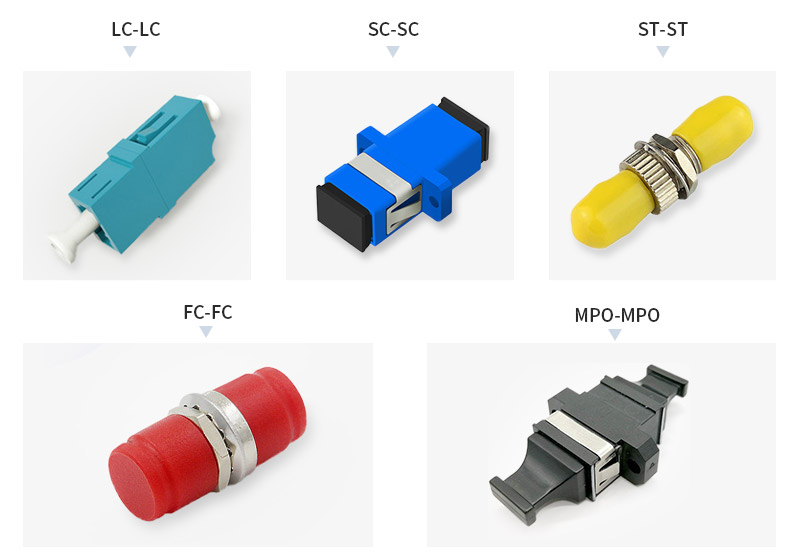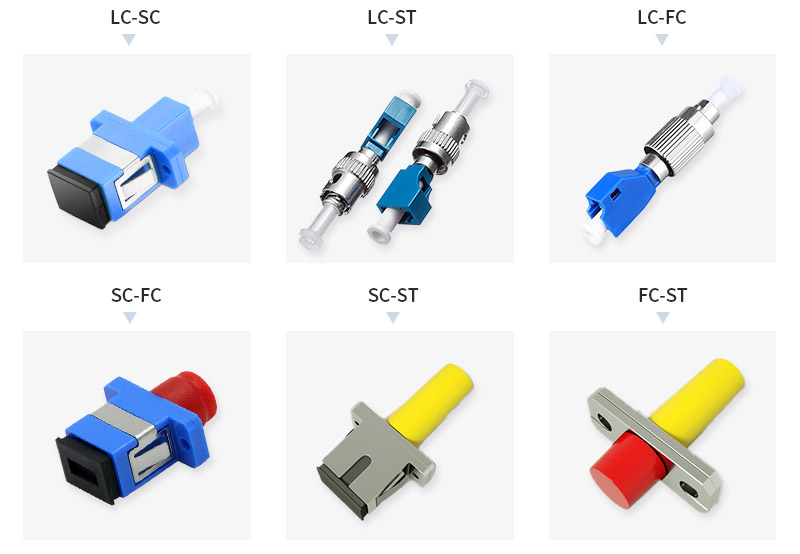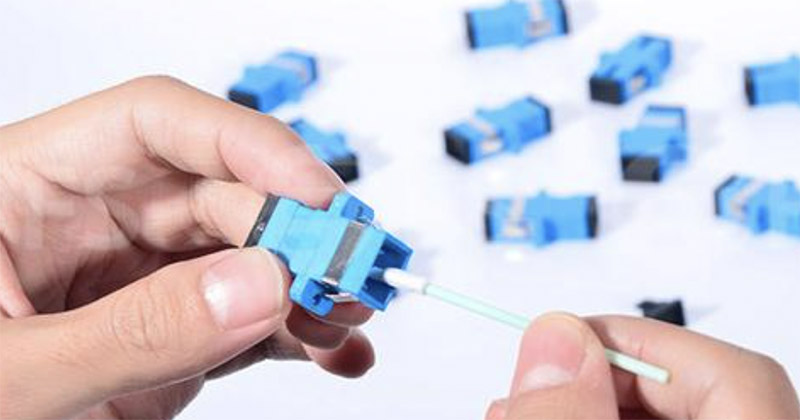What Is Fiber Optic Adapter and How to Choose It
Fiber optic adapters are very important connecting components used to accurately terminate the optical fiber cables or fiber connectors. They are widely applied in fiber communication systems, fiber optical testing devices, LANs, etc. There are many different types of fiber optic adapters available on the market, so it can be difficult to choose the right one. In this blog post, we will discuss what fiber optic adapters are, fiber optic adapter types and how to choose the right one for your needs.
.
They are very essential optical fiber connection components, widely applied in local area networks (LANs), optical fiber communication systems, and FTTH (Fiber to the Home).
Fiber Optic Adapter Types
In the previous blog, we explained the differences between LC vs SC vs FC vs ST vs MTP vs MPO. Since there are diverse fiber connector types, fiber optic adapter also has various types.
The connector type at both ends of the fiber optic adapter is the basic attribute of the fiber adapter. According to connectors at both ends of the fiber adapter are the same or different, fiber optic adapter types include as follows:
Connectors are the same at each end:
• LC-LC
• SC-SC
• ST-ST
• FC-FC
• MPO-MPO

Connectors are different at each end:
• LC-SC
• LC-ST
• LC-FC
• SC-ST
• SC-FC
• FC-ST

Further, based on different fiber transmission modes and fiber cores inserted, optic adapters can be divided into simplex/duplex fiber optic adapters and single-mode/multimode fiber optic adapters.
How to Choose Fiber Optic Adapters?
There are so many different types of fiber optic cable adapters, and they look almost the same in physical appearance. You may be confused about how to choose a fiber optic adapter, the following blog will give several tips for choosing a fiber optic adapter.
1. Figure out what type of fiber cable to connect before purchasing. If you need to connect two different fiber cable types, then you need a hybrid fiber optic adapter.
2. Choose more proper sleeve materials. The main materials of the alignment sleeve are metal and ceramic. It is proven that the ceramic-made sleeve is better than the metal-made sleeve since the ceramic structure is more firm and stable, but metal material is easy to deformation. Hence ceramic-made fiber optic adapter is more conducive to providing a tight connection.
3. Confirm the insert loss of the fiber optic adapter. The insert loss of the fiber optic adapter refers to the optical power attenuation caused by the adapter. Insert loss is mainly caused by the deviation when two optical fibers get connected. If the two optical fibers are aligned, the deviation will be zero, hence the insertion loss will be very low. However, in the actual connecting process of the fiber optic adapter, such ideal insert loss is unlikely to be achieved, because the ideal fiber connecting will be influenced by many factors, including the physical properties of the fiber itself, and the accuracy of manufacture of the fiber optic adapter. Therefore, choosing a reliable fiber optic adapter manufacturer is vital for ensuring minimal insert loss.
How to filter high-quality fiber optic adapters? Fiber optic adapters are very small, but their quality will affect the whole fiber link. Hence choosing a reliable manufacturer is vital. A reliable fiber optic cable adapter should provide the following features:
• Low insert loss. Generally, the insert loss needs to be limited within 0.2dB.
• High repeatability. The optical fiber adapter will insert in and pull out frequently during usage, so the adapter requires high durability. The typical standard requires that the insertion and extraction times can reach 500 or more without affecting the performance.
• Ceramic-material sleeve. The crystal structure of ceramics is hard and not easy to deform, so it can realize fast and high-accuracy connections. The ceramic-made sleeve provides more reliable performance compared to the metal-made sleeve.
How to Clean a Fiber Optic Adapter?
Like other fiber optic devices, fiber optic cable adapters also need to be cleaned. The contamination of the fiber adapter may burn out the fiber core, resulting in output power reduction. Therefore, it is very important to take appropriate measures to clean the fiber optic adapter. Here are some effective ways to clean the optical fiber adapter.
1. Using a fiber optic cleaning box. The cleaning box includes built-in fiber optic cleaning tape. Its strong anti-static properties can avoid the secondary pollution caused by the reattachment of dust to the ferrule after cleaning.
2. Using a fiber optic cleaner pen. The fiber cleaner pen is easy to operate. The common pen shape enables 180° rotating for a full range of cleaning. There will be a "Kata" tone when cleaning.
3. Using fiber optic cleaning swabs. Insert the lint-free swab into the sleeve of the fiber optic adapter then turn it.

Conclusion
Although fiber optic cable adapters are small, they function great in many applications, including fiber communication systems, fiber transmission devices, LANs, FTTH, etc. This blog has explained the fiber optic adapter types, what should be noticed when choosing a fiber optic cable adapter, and tips about how to clean it. If you still have any confusion about fiber optic adapters or fiber optic cables, welcome to visit our website www.qsfptek.com and contact us via [email protected].











